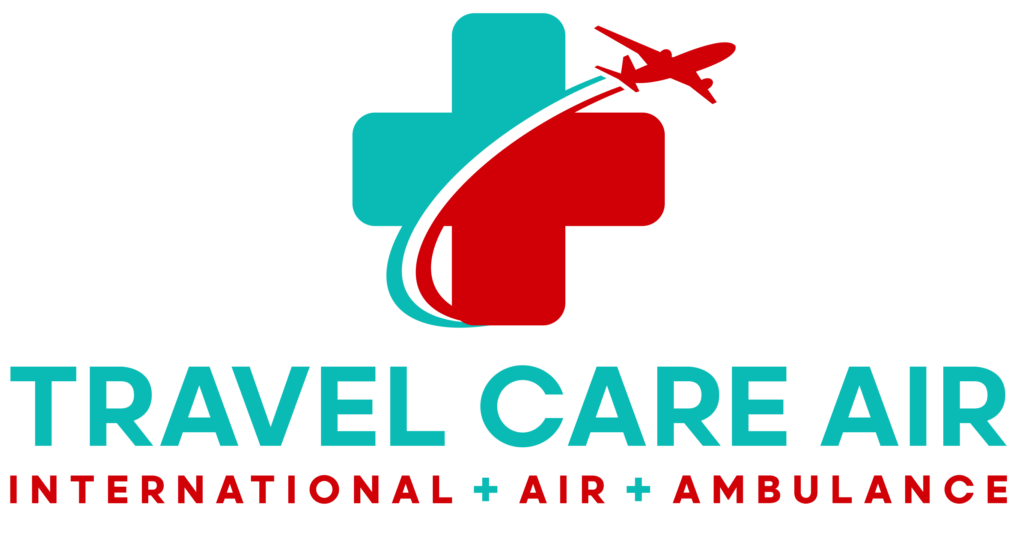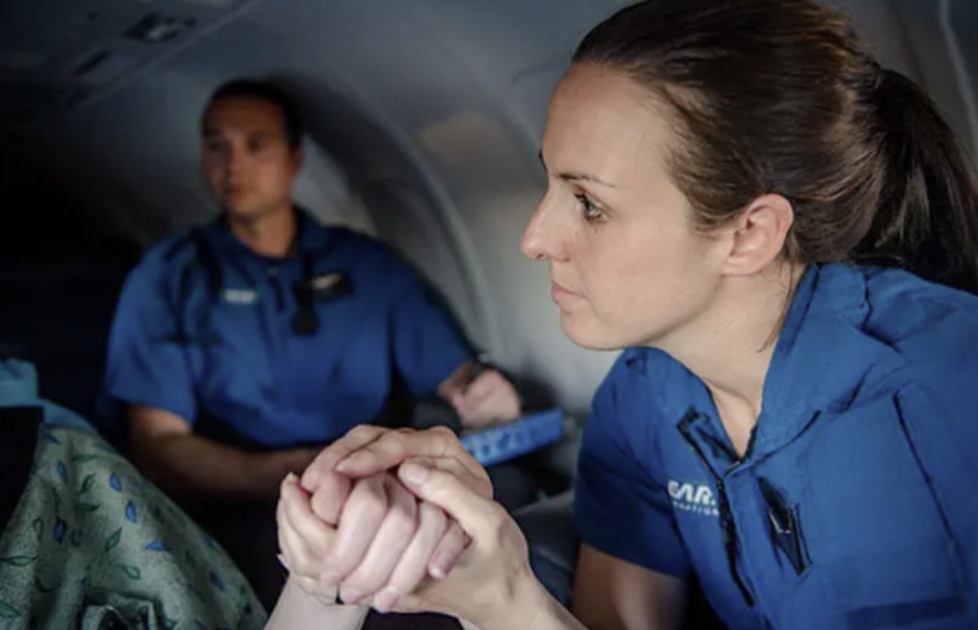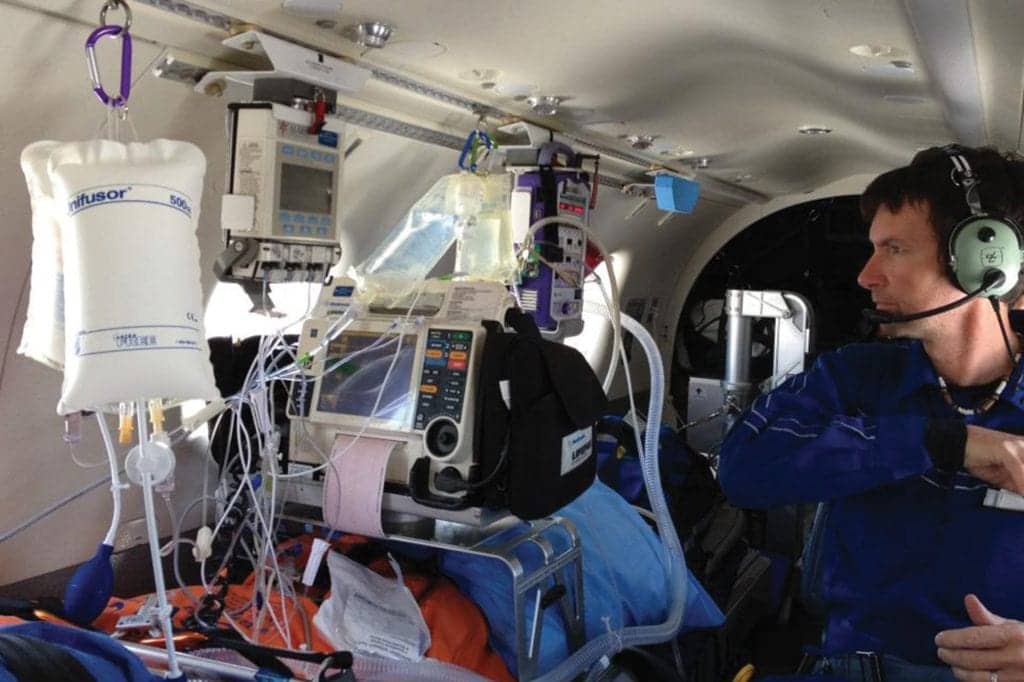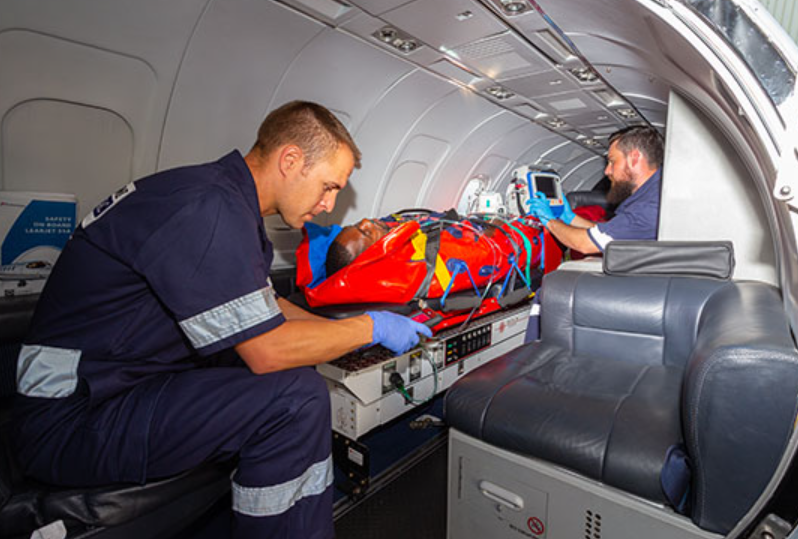You never picture yourself planning an emergency air ambulance for someone you love…until one phone call changes everything. Whether it’s a sudden health crisis, a long-distance transfer, or an urgent medical repatriation, the entire experience can feel completely surreal. In those critical moments, having the right guidance and a steady hand can make all the difference.
This blog was specifically created to help walk you through what to expect when arranging an air ambulance with the real, helpful answers that you need at this moment. When you’re arranging an air ambulance for family, even the smallest details can make a big difference. That’s why knowing what comes next can give you the clarity and peace of mind you need to make the right decisions with confidence.
Here’s what you’ll learn:
- The full medical transport process and what to expect when arranging an air ambulance
- How arranging a medical flight works from first start to finish
- What to pack and how to prepare for a safe and comfortable journey
- What happens on an air ambulance during the flight
- The role of a flight nurse
- Cost, coordination, and how Travel Care Air supports families every step of the way
What to Expect When Arranging an Air Ambulance
Understanding exactly what to expect when arranging an air ambulance can help you feel a lot more confident and supported during an often very emotional time.
Here’s how the medical transport process typically works:
Step 1: Initial Call and Intake
You’ll speak with a transport coordinator who listens to your situation and asks for all of the important medical details – the more details that you can provide them, the better. They will walk you through all of the next steps and answer any of your immediate questions.
Step 2: Medical Assessment and Documentation
The patient’s medical team will share the records that help determine what care will be needed during transport. This ensures the right level of service is given, the proper aircraft is chosen, and an appropriate crew is assigned to care for your loved ones.
Step 3: Flight Plan and Logistics
Once everything is reviewed, the team builds a plan. This includes coordinating with hospitals, securing ground ambulances on both ends, and scheduling the flight. If needed, you’ll also learn more about arranging a medical flight internationally or for long-distance repatriation.
Step 4: Approvals and Payment
Approvals from hospitals and, when applicable, insurance providers are obtained at this stage of the process. Transparent pricing and guidance on payment options are provided upfront so that you know exactly what is covered and what out-of-pocket expenses can be expected.
Step 5: Family Communication and Prep
You can rest assured that you will receive proper updates at each stage of the process. Our team explains what to bring, what to expect during the flight, and how to emotionally support your loved one before departure.
When families understand the medical transport process, they’re better prepared, both mentally and practically. From the first phone call to the moment that your loved one is safely in care, every step is managed by professionals who know just how important this moment is for you.
What Happens on an Air Ambulance
When you’re trying to understand what happens on an air ambulance, it helps to picture a flying intensive care unit. These aircraft are specially equipped to handle serious medical conditions during flight, with trained professionals monitoring the patient every step of the way.
So what is in a medical air ambulance? You’ll find advanced medical equipment that is similar to what you’d see in a hospital setting. Things like cardiac monitors, ventilators, IV pumps, oxygen supplies, and emergency medications are all onboard. The interior is designed with both patient care and safety in mind, with a stretcher secured in place and clear room for the medical crew to work.
Medical teams use built-in communication systems to stay in touch with ground staff, receiving instructions or updates whenever needed. Whether the patient requires cardiac support, pain management, or close respiratory monitoring, care is continuous and highly focused.
Comfort is also a consideration. While space is limited, the crew ensures that the patient is stable, supported, and as relaxed as possible during the entire flight.
Knowing what to expect when arranging an air ambulance includes being prepared for this high level of in-flight care. Every detail is specifically designed for the highest level of safety, to ensure expert treatment is provided, and to give peace of mind to everyone involved throughout the journey.
What Is the Role of a Flight Nurse?
When planning a medical flight, one of the most important parts of the crew is the medical team that is onboard. That team usually includes a highly trained pilot, a critical care paramedic, and a flight nurse.
So what is the role of a flight nurse exactly? These professionals are responsible for constant in-flight medical monitoring, providing emergency response when needed, and offering physical and emotional care from start to finish. They manage everything from IV therapy to advanced life support, making important decisions in real-time to ensure patient safety.
Flight nurses are advocates for the patient, and they help keep families informed, providing comfort, and staying calm under pressure. Whether it’s answering a worried loved one’s question or adjusting medication mid-flight, they’re there to provide the best possible care at every stage.
Questions Families Should Ask Before Booking
Knowing what to expect when arranging an air ambulance means understanding exactly what’s involved before making any decisions. Here are a few essential questions to ask:
- Is the provider licensed, insured, and experienced with complex medical cases?
- What services are included in the cost…medical staff, ground transport, equipment, post-flight support?
- Can a family member ride along during the flight?
- How is cost calculated, and are there payment or insurance options?
- Is there 24/7 availability for questions, planning, or last-minute changes?
Choosing an air ambulance for family members is a big decision, so providers should offer clear answers, transparent pricing, and personalized planning that fits all of your loved one’s needs. A trusted team will walk you through everything with care, helping you prepare emotionally and logistically – day or night.
Making the Right Call for Your Loved One
Understanding what to expect when arranging an air ambulance makes it much easier to act quickly and confidently when your loved one needs urgent care. The medical transport process involves many different moving parts, but with the right provider, it becomes a smooth, safe process.
Travel Care Air brings over 40 years of experience in coordinating complex medical flights with compassion and clarity. Families count on us for expert care, real-time communication, and personalized solutions when it matters most.
Call Travel Care Air now at 1-800-524-7633 or visit us online to speak with one of our experts who will help you plan every step of the process from your first question to a safe arrival at your destination.
Frequently Asked Questions
How much does it cost to fly in an air ambulance?
Costs vary widely depending on the distance traveled, level of care, and type of aircraft. On average, an air ambulance for family members can range from $10,000 to over $50,000. The price also includes medical staff, onboard equipment, and the complexity of the medical transport process.
Do air ambulances get priority?
Yes, air ambulances often receive flight priority to avoid delays, especially during time-sensitive transports. Air traffic control typically works with providers to ensure the fastest and safest route possible. This coordination helps protect patients during urgent transfers.
What happens in an air ambulance?
During a flight, patients receive continuous medical care from trained professionals. What happens on an air ambulance includes vital sign monitoring, oxygen therapy, IV medications, and emotional support. The medical team ensures safety and comfort throughout the journey using specialized equipment and proven protocols.
Who pays for an air ambulance?
Payment may come from private insurance, travel coverage, or out-of-pocket funds. Some families also explore financial support or payment plans. The provider should offer a clear breakdown of costs and options, especially when arranging an air ambulance for family during emergencies.
What is the difference between an air ambulance and a medevac?
An air ambulance is typically a private medical flight arranged for non-military patients. Medevac often refers to emergency evacuations (sometimes military-based) during trauma or disaster. Both follow a structured medical transport process but vary in purpose, staffing, and scope.
When would you need an air ambulance?
You may need one if a patient is too sick or fragile to travel commercially. Common situations include accidents abroad, severe illness, or transfers for specialized care. Families choose air ambulances for speed, safety, and the ability to stay closely involved during transport.



